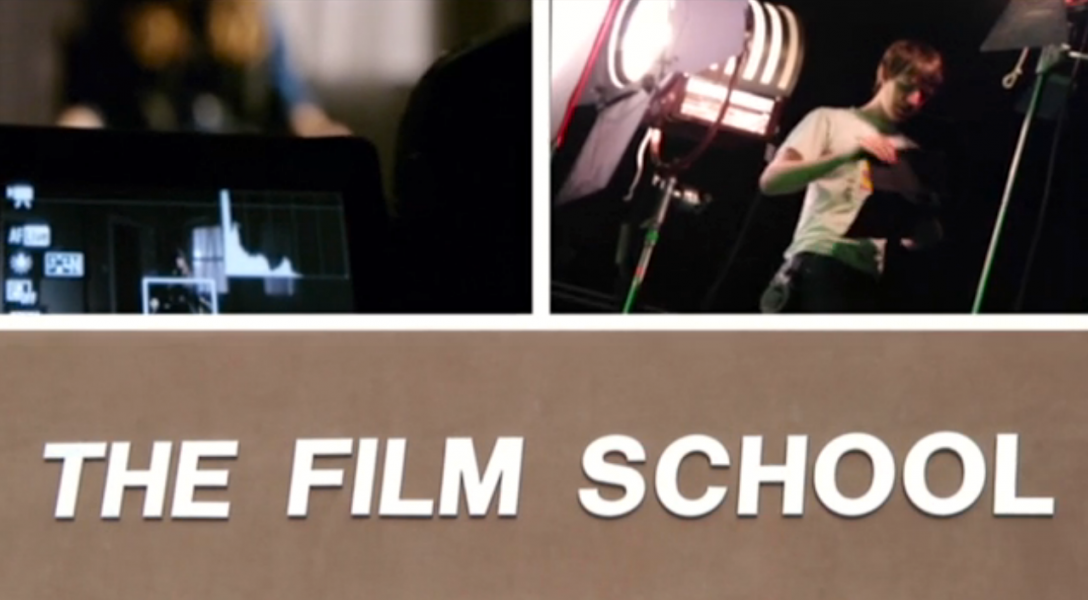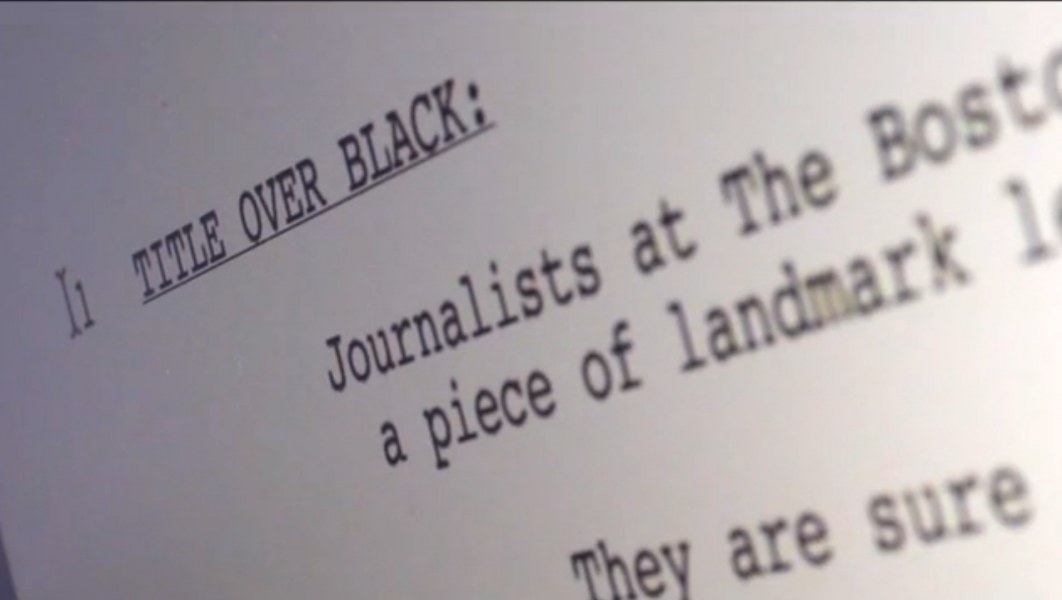Tags
Related Posts
Share This
2013 Launch of Shoot the Stars
Tuesday, Sept 24, Film School Chairman Chris Eyre officially announced this year’s Shoot the Stars scripts, directors and producers. Two teams, two stars, two films!
“These were extremely difficult selections,” Eyre writes in his email to film students, some of whom were disappointed not to see their names on the list of directors and producers. “We have so many talented students here at The Film School,” Eyre continues, “Hollywood, of course, is a place where ‘no’ is said a lot more than ‘yes.’”
Last year, Eyre initiated the first of the Shoot the Stars projects, announcing that every year in November the Film School would hire two well-established “star” actors to work under two student-assembled film crews. The product would be two short films, produced entirely by the Santa Fe University of Art and Design Film School.
For seven students, the announcement of scripts, directors and producers was taken with relief and great anticipation.
“I’m dying to be a director,” says Joshua James, the official director for Baxter Smith’s screenplay, Mister Stapleton. When he was called for his interview, James explains, he didn’t know what to expect. “The email said you had to have a pitch ready…but when I got in there, it wasn’t so much a pitch as it was a conversation.”
Similarly, Bonnie Burchfield, the Producer for Mister Stapleton, describes the interview with Assistant Chair Paula Amanda and Hank Rogerson, film production instructor, as a conversation between acquaintances.“It was very calm,” Burchfield says. “I didn’t feel like I was going into a tense situation. Hank has such a warm vibe about him anyway, he’s so soothing that it made me feel really confident.”
Hank Rogerson, in charge of Shoot the Stars’ production team, explains that in selecting candidates for director and producer “faculty goes by class experience,… applications, GPA, and year. And then,” Rogerson adds, “it comes down to how they present themselves in the interview, through preparation, presentation and vision.”
As upper classmen, both James and Burchfield share the benefit of having worked with the Film School staff. In anticipation of Shoot the Stars 2013, they’ve directed and produced their own students films. “What made the final selections stand out,” Rogerson says, “was how much they presented a whole package—from vision for the projects to track record in the department.”
For those unfamiliar with the tasks of a film producer, Burchfield considers it the job suited for “real problem solvers.” “They’re there to do the business end,” she says. “The end that the director doesn’t want to think about.” In charge of budget for pre-production, production and post production, Burchfield says, “they stay with it through to the end, into marketing, into the film circuit.” The problem solving, Burchfield describes, comes in when the director’s vision does not match the boundaries of the budget. “They have to provide other options,” Burchfield says, “that stay within the creative vision of the director.”
Speaking of directors, Joshua James, a senior of the Film School, says he had been thinking of signing up for Shoot the Stars since January. In anticipation, James directed and produced a student film in the Spring called Nightmares and Daydreams in hopes the addition to his resume would give him a leg up. With plenty of film directing under his belt, James says his theater background, five years acting and directing plays in high school, also came up during his interview.
“Mister Stapleton is written a lot like a play,” James says. “Baxter described it as kind of a gloried sketch that can be performed live if it weren’t for particular elements. When Chris [Eyre] told me that I got the position, he told me that my theater experience was a big reason for it. He thought I’d be comfortable with the actors and I’d have a good understanding of how to communicate with them.”
Terry Borst, screenwriting instructor for the Film School and script editor for Shoot the Stars, says that out of the many “terrific scripts” submitted, the two finalist “fit within the production parameters” and exhibited a challenge for incoming actors, who are described as a male in his 50s and a female in her 20s. Other than reading for producability, Terry says the most important question for the script remains, “is it a good story?”
By the end of July, the faculty had read the submissions and, based on these guidelines, announced Zoe Dahmen’s Dead Celebrity and Baxter Smith’s Mister Stapleton as the final Shoot the Stars scripts.
If you could bring back just one person from the dead for 24 hours, who would it be? Someone you loved and knew, or someone you loved and wished you’d known? Sound Intriguing? This is what Terry Borst calls the logline, a plot summary or pitch of Dahmen’s Dead Celebrity. According to Borst, Dahmen’s script is more of a drama while Smith’s Mister Stapleton is a comedy. Smith’s logline? What would you do if a D- grade stood between you and graduation? What would you be willing to do? The drama and comedy choice was the case last year, Borst explains, Boston Post was a drama and Max Dangerous was a comedy. “One is more challenging on a production level than the other,” Borst says, “and you’re thinking of those things during selection.”
Baxter Smith, a junior at the Film School, says that comedy is his “go to” genre. “I’ve always liked it and it’s something that I think I can do fairly well.” Burchfield, who Smith will work with as a co-producer, says that Mister Stapleton’s female character reminds her of Audrey Hepburn. “It takes a lot to make me laugh,” Burchfield says, “the fact that I was very amused by this script caught my eye.”
The idea for Mister Stapleton, which Smith began working on last semester, came, Smith explains, after watching a movie, “or some TV show that had a teacher in it. I thought, ‘oh, a teacher, I can work with that’…I knew the parameters were 50s male and 20s female. I tried to think of something comedic that can be tied into that…several drafts later,” he pauses with a smirk, “[the script] is on its way.”
Last year, the first year of the Shoot the Stars projects, Smith worked set design in order to “observe things and see what it was like.” Since then, he says, “I feel like I’ve come too far too quick.” Following Borst’s suggestion to “have a hand” in the final product, Smith took on the additional task of producer. “I don’t like this,” Smith jokes, “I feel like I can only go down from here.” Overhearing Smith, Mister Stapleton’s director James laughs. “As long as you can make the director laugh,” Smith adds, “you know you are in good shape.”
The next step for Shoot the Stars? “Step on it!” says production instructor Rogerson. With less than seven weeks, Rogerson says they will need to “push to get the crews filled out, casting done, locations locked and the extensive pre-visualization done. It will be a great ride,” he adds. “Here we go!”













 Jackalope Magazine is the student magazine of Santa Fe University of Art and Design. Building on the interdisciplinary nature of our education, we aim to showcase the talent of our university and character of our city.
Jackalope Magazine is the student magazine of Santa Fe University of Art and Design. Building on the interdisciplinary nature of our education, we aim to showcase the talent of our university and character of our city.
Recent Comments